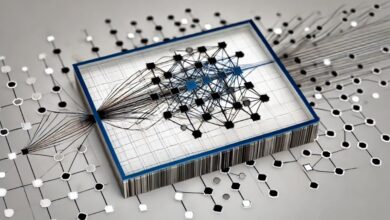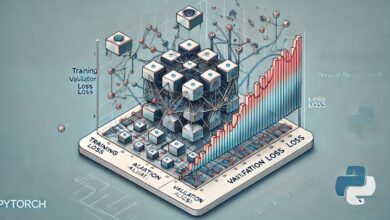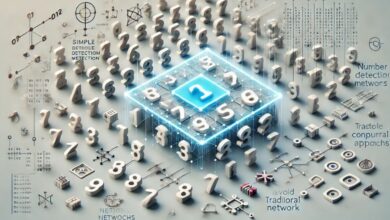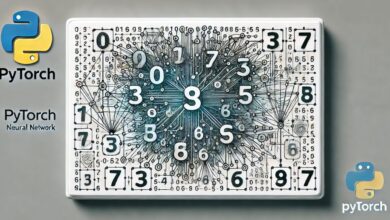Understanding Digital Twin in LLM: Exploring the Synergy Between Digital Twins and Large Language Models

The rise of AI and machine learning technologies has paved the way for innovations in various sectors, including manufacturing, healthcare, and data science. One concept that has been growing in popularity is the idea of the “digital twin,” a virtual replica of a physical object, system, or process. When paired with large language models (LLMs), such as GPT-3 and GPT-4, this synergy creates an exciting frontier for intelligent systems. In this article, we will explore the concept of a “digital twin in LLM,” how it works, and the potential it holds for future technological advancements.
What is a Digital Twin in LLM?
A digital twin is essentially a virtual counterpart of a physical object, system, or process that is designed to mirror and simulate the behavior and performance of the real-world entity. In the context of large language models, the term “digital twin in LLM” refers to a digital replica that interacts with AI systems like GPT, using real-time data and machine learning to predict behaviors, optimize performance, and analyze trends.
When applied to LLMs, digital twins enable more nuanced and dynamic decision-making. A digital twin in LLM leverages the powerful natural language processing (NLP) capabilities of large language models to process vast amounts of data, learn from them, and provide real-time insights. This allows companies and industries to build systems that can predict outcomes and make data-driven decisions efficiently.
How Digital Twin in LLM Works
The concept of digital twin in LLM involves integrating the virtual replica of a physical entity with the analytical and predictive power of large language models. This process typically follows these steps:
- Data Collection: Sensors and IoT devices collect data from the physical world. For example, in a manufacturing setting, real-time data about machinery operations, temperatures, and production rates are gathered.
- Data Transmission to the LLM: The collected data is fed into the LLM, such as GPT, which analyzes the data, draws conclusions, and creates a virtual model of the system’s current state.
- Prediction and Simulation: With the digital twin established, the LLM can use its vast database of knowledge and natural language understanding to simulate different scenarios. For instance, it might predict equipment failure or suggest performance optimizations based on historical data.
- Continuous Feedback Loop: The system learns continuously by comparing the predictions of the digital twin with actual outcomes, refining its models to increase accuracy.
Applications of Digital Twin in LLM
The convergence of digital twin technology and LLM opens up various possibilities across multiple industries:
1. Manufacturing and Industrial Operations
Digital twins in manufacturing have become essential for predictive maintenance, quality control, and performance optimization. By utilizing LLMs, manufacturers can enhance these processes by analyzing unstructured data, such as technical manuals, operator logs, and maintenance records. This allows for the generation of more accurate predictive models. With the implementation of digital twin in LLM, companies can anticipate equipment breakdowns, minimize downtime, and increase overall productivity.
2. Healthcare and Medicine
In healthcare, a digital twin in LLM can be applied to monitor patient conditions and predict treatment outcomes. For instance, patient data, such as vitals and medical history, can be modeled virtually, enabling healthcare professionals to simulate the effects of different treatments. LLMs can interpret medical literature, patient records, and clinical trials to suggest the best course of action, improving patient care.
3. Smart Cities and Urban Planning
Urban planners are increasingly looking to digital twins to simulate city development and optimize resources. When combined with LLMs, these simulations become even more sophisticated. The integration of digital twin in LLM could enable planners to predict traffic flows, optimize energy usage, and improve public services based on real-time data from IoT devices across a city. The language models can provide deep insights into urban challenges, allowing cities to become smarter and more efficient.
4. Aviation and Aerospace
In the aerospace industry, digital twins are used to monitor the health of aircraft systems and predict failures before they happen. With LLMs, engineers can process large amounts of maintenance logs and technical documents, improving the digital twin’s ability to predict and prevent malfunctions. This combination of LLM and digital twin technology could significantly enhance flight safety and reduce operational costs.
5. Customer Experience and Personalization
The e-commerce and customer service sectors are ripe for digital twin technology, particularly when combined with LLMs. Companies can create digital twins of customers based on their behavior, preferences, and interactions. The digital twin in LLM can then be used to predict customer needs and personalize services. For example, a digital twin could help a retailer provide tailored product recommendations, improving customer satisfaction and sales.
The Benefits of Digital Twin in LLM
1. Enhanced Predictive Capabilities
One of the key advantages of digital twin technology when integrated with LLMs is the improvement in predictive analytics. By utilizing natural language models, businesses can draw from a more extensive range of data sources, including both structured and unstructured data, such as documents, reports, and customer feedback.
2. Real-Time Decision Making
Another significant benefit of digital twin in LLM is the ability to make real-time decisions. The AI systems can continuously update the virtual replica with new data, ensuring that decisions are based on the most current information available. This capability is invaluable in fast-paced industries like manufacturing, aviation, and healthcare.
3. Cost Efficiency
By predicting potential failures, optimizing processes, and reducing downtime, digital twins can save companies significant amounts of money. The incorporation of LLMs adds another layer of efficiency, as they can automate tasks that typically require human input, such as interpreting technical documentation or customer inquiries.
4. Improved Insights
The combination of digital twin and LLM offers deeper insights into complex systems. The natural language processing capabilities of LLMs allow for the integration of more qualitative data sources, providing a more holistic view of the system in question.
Challenges and Future Directions
While the concept of digital twin in LLM holds great promise, there are some challenges that need to be addressed. First, integrating unstructured data into digital twins requires advanced NLP capabilities, and current LLMs are still being fine-tuned to interpret and understand the nuances of human language. Additionally, the massive data processing requirements of digital twins can strain computational resources, necessitating robust cloud infrastructure.
As LLMs continue to evolve, we can expect the role of digital twins to expand into more industries and use cases. Future advancements in AI, such as increased contextual understanding and more powerful generative capabilities, will further enhance the accuracy and effectiveness of digital twin systems.




